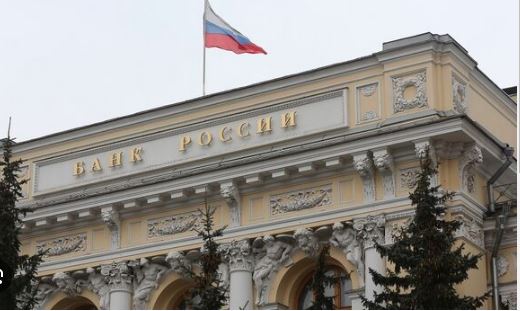The price is right Why Russia’s economy appears to be booming in the face of sanctions

Last week, Russia’s Finance Ministry released its preliminary report on the federal budget indicators for the first quarter of 2024, revealing results that surpassed expectations. Government earnings are soaring above last year’s figures, a surprisingly positive outcome partially attributed to high oil prices and increased consumer spending. With more money in its coffers and the war in Ukraine still raging on, the Russian government is only increasing its spending.
However, this upward trend raises concerns about continued inflation. Meduza explains what led to this sudden influx of funds and what economists think about the Russian economy’s outlook.Why are Russia’s oil and gas revenues up? In the first quarter of 2024, oil and gas earnings surged by nearly 80 percent compared to the same period in 2023, injecting 2.9 trillion rubles ($31 billion) into Russia’s federal budget. There are a number of factors that led to this sizeable increase. Firstly, oil prices are on the rise. At the beginning of the year, a barrel of Brent crude oil was trading at $80; now, it’s going for more than $90.
The U.S. has been replenishing its raw material reserves as OPEC countries cut production, leading to a shortage that’s driven up prices. Furthermore, the conflict between Israel and Hamas has threatened shipments through the Red Sea, raising concerns among investors about potential disruptions to the supply chain. Moreover, Iran, one of the world’s major oil suppliers, has now entered the conflict.Secondly, Russia has revised its method for calculating the mineral extraction tax (MET). In 2023, revenues were collected based on actual prices for Urals oil, the blend used as the price benchmark for Russian oil exports.
However, the returns were unpredictable: discounts on raw materials constantly fluctuated in response to sanctions pressures. Starting this year, there’s a new system in place. If the price difference between Urals oil and Brent isn’t too significant, the authorities still use the actual Urals oil price for tax calculations. However, if the gap widens, the Russian Finance Ministry imposes a maximum discount of $20 per barrel in its calculations. This means that if a barrel of Brent is selling at $100 and a barrel of Urals is selling at $50, the ministry disregards the actual price and levies taxes based on a price of $80 per barrel.
This maneuver has proven effective: analyst Kirill Rodionov calculated that at the beginning of last year, the average price used for tax calculations was $51 per barrel. Now, with the new calculations, the average is closer to $70.The Russian government has also seen an increase in revenues from its quarterly profit-based tax (NDM). Unlike MET, which is paid based on the volume of extracted raw materials, NDM is levied on profits from sales. This allows companies to defer their tax burden until after they’ve become profitable, which, in theory, encourages them to invest in developing new reserves.
Likewise, when an oil deposit begins to deplete, the tax starts to drop off, incentivizing companies not to abandon the project. The more companies increase their overall production, the more tax revenue the government stands to make once the companies turn a profit.When a company transitions to paying NDM, it continues to pay MET, albeit at a heavily reduced rate. Nevertheless, due to the advantages of tax deferral, the profit margins for certain companies remain higher under the combined scheme than when paying only MET at the full rate. Russia has been steadily expanding this profit-based tax regime, growing its share of the federal budget’s oil and gas revenue from 9 percent to 52 percent over the last five years.
According to Rodionov’s calculations, federal revenue from NDM went from 211 billion rubles ($2.3 billion) in the first quarter of 2023 to 587 billion rubles ($6.3 billion) in the first quarter of 2024. The Finance Ministry’s report also highlights a one-time revenue boost from a temporary increase in the MET rate mandated in January 2024.
In the fall of 2023, the Russian government halved damper payments, a type of subsidy that compensates oil companies for selling fuel on the domestic market. Unsurprisingly, this led to a sharp increase in gas prices in Russia.
The government quickly abolished the unsuccessful reform but decided to compensate for the damper payments through a higher MET.Since Russian tax legislation doesn’t allow for MET to be applied retroactively, a higher MET rate was imposed on companies in January of this year, allowing the Finance Ministry to make up for last fall’s budget losses. Although the report doesn’t disclose the exact amount, Interfax’s sources estimated it at around 190 billion rubles ($2 billion). The ruble’s depreciation could also have impacted the statistics.
At the beginning of 2023, the Russian ruble was stronger, trading at around 70 to the U.S. dollar, meaning fewer rubles for every dollar of oil earnings, notes Evgeny Nadorshin, the lead economist at PF Capital. The ruble weakening to 90 to the dollar automatically led to an increase in budget revenues from oil sold abroad. Taking all of these factors into account, Russia’s Finance Ministry predicted that oil and gas revenues will continue to exceed the baseline level, saying it observes a “stable positive trend.”
